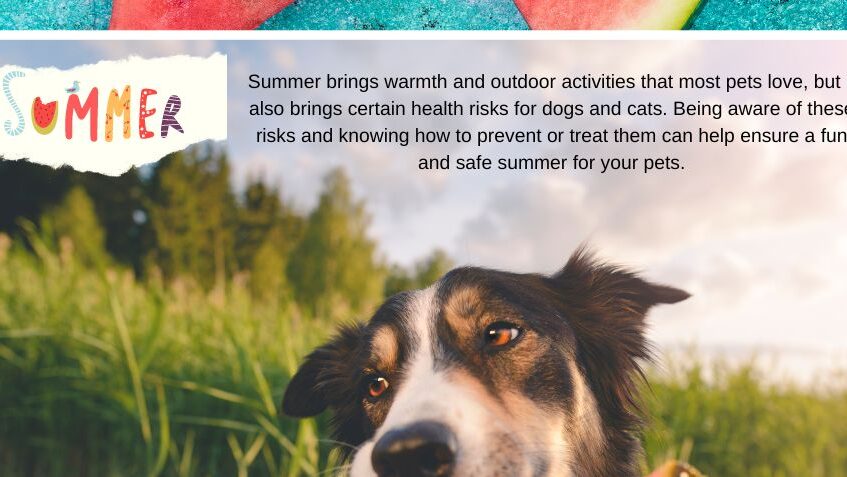Some common illnesses and health issues that dogs and cats might face this summer!
Summer brings warmth and outdoor activities that most pets love, but it also brings certain health risks for dogs and cats. Being aware of these risks and knowing how to prevent or treat them can help ensure a fun and safe summer for your pets. Here are some common summer illnesses and health issues that dogs and cats might face:
1. Heatstroke
Heatstroke is a severe threat to pets during the hot summer months, especially if they are left in cars, confined spaces without adequate ventilation, or exercised too heavily in hot weather. Signs of heatstroke include excessive panting, drooling, lethargy, vomiting, diarrhea, uncoordinated movement, and collapse. Immediate cooling and veterinary attention are crucial to treat heatstroke.
2. Dehydration
Increased temperatures can lead to dehydration if pets don’t consume enough water. Symptoms of dehydration include lethargy, dry gums, and decreased skin elasticity. Ensuring constant access to fresh water and providing shady spots are essential during hot weather.
3. Parasites
Summer increases the activity of parasites such as fleas, ticks, and heartworm-carrying mosquitoes. These pests can cause various issues, ranging from mild irritations to severe diseases. Regular use of preventatives, as recommended by a veterinarian, is critical in managing these risks.
4. Sunburn
Pets, particularly those with short or light-colored coats, are susceptible to sunburn. Areas with less fur, like the nose, ears, and belly, are particularly vulnerable. Using pet-safe sunscreen and providing shaded areas can help protect your pet.
5. Allergies
Summer can exacerbate allergies in pets due to increased pollen, grass, and dust. Symptoms may include skin irritation, scratching, and sneezing. Treatment often involves medications to control symptoms, alongside regular bathing and grooming to remove allergens from the fur.
6. Paw Pad Burns
Hot surfaces like asphalt can burn a pet’s paw pads. Signs include limping, refusing to walk, licking or chewing at the feet, and visible damage to the pads. Walking pets during cooler parts of the day and on grass or soft surfaces can prevent these injuries.
7. Infectious Diseases
Diseases such as leptospirosis can be more common in summer as pets might come into contact with water sources contaminated by infected wildlife. Vaccination and preventing pets from drinking standing water can help mitigate this risk.
8. Gastrointestinal Issues
Increased outdoor activity can lead to gastrointestinal upsets if pets consume spoiled food, garbage, or toxic plants. Symptoms include vomiting, diarrhea, and loss of appetite. Keeping a close eye on what your pet ingests during outdoor activities is essential.
If you notice any symptoms of these summer illnesses, it is important to seek veterinary care promptly to ensure your pet remains healthy and happy throughout the season.
Visit your veterinarian as early recognition, diagnosis, and treatment are essential.
You may also visit – https://www.facebook.com/angkopparasahayop




